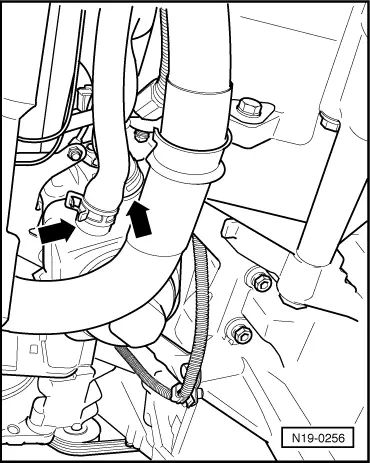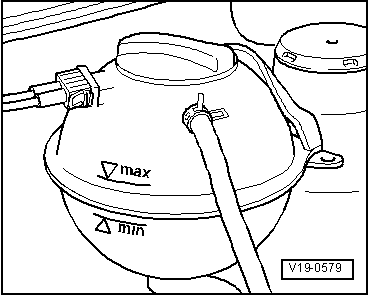| –
| To drain coolant from engine, also remove coolant hoses from oil cooler -arrows-. |

Note | Observe environmental regulations for disposal. |

Note | t
| Use only coolant additive G 12 in accordance with TL VW 774 F. Identification: purple colour. |
| t
| G 12 purple (in accordance with TL VW 774 F) can be mixed with the previous coolant additive G 12 red! |
| t
| G 12 and coolant additives marked “Conforming to TL VW 774 F” prevent frost and corrosion damage, scaling and also raise boiling point of coolant. Therefore, the cooling system must be filled all year round with frost and corrosion protection additives. |
| t
| Because of its high boiling point, the coolant improves engine reliability under heavy loads, particularly in countries with tropical climates. |
| t
| Frost protection is required down to about -25 °C (in countries with arctic climates: down to about -35 °C). |
| t
| The coolant concentration must not be reduced by adding water even in warmer seasons and in warmer countries. The coolant additive must be at least 40% of mixture. |
| t
| If for climatic reasons greater frost protection is required, the amount of G 12 can be increased, but only up to 60% (frost protection to about -40°C). Otherwise frost protection and cooling effectiveness are reduced again. |
| t
| If radiator, heat exchanger, cylinder head or cylinder head gasket is replaced, do not reuse old coolant. |
| Recommended mixture proportions: |
|
|

|

 Note
Note Note
Note


 WARNING
WARNING